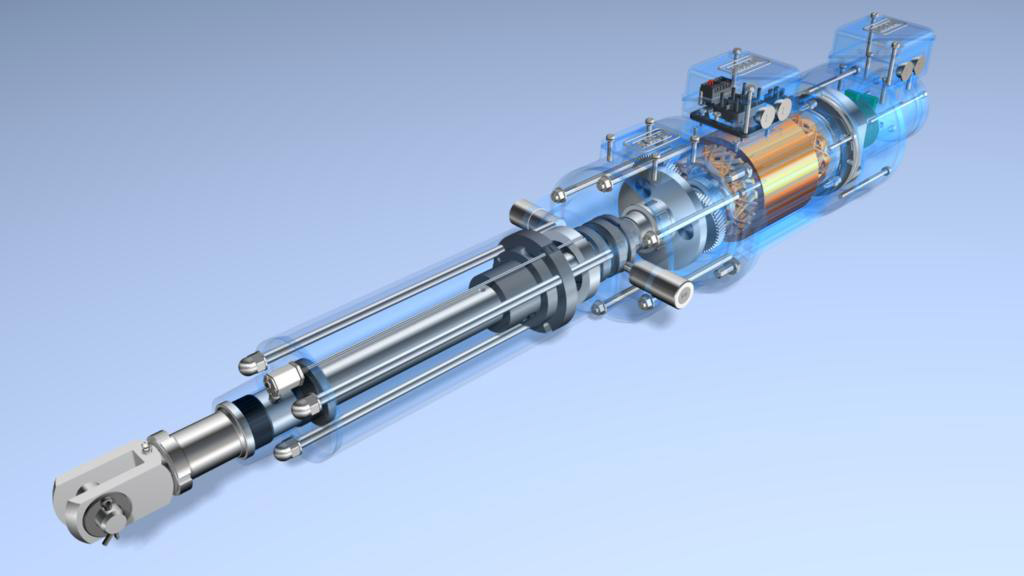| Main
design features Configurations ACME versus ball screw The Modular System Type Code Drive Motors Accessories Over Stroke Protection Actuator in Extreme Cold Environments |
 |
|
| RACO Modular Actuator Main Design Features | ||
 |
||
|
Electro-mechanical
linear actuators are gaining more and more recognition in the industry
as reliable, strong and environmentally friendly components to replace
hydraulic and pneumatic cylinders. With more than 50 years of experience
and unique patented features the RACO Electric Linear Actuator is
the standard in the industry. The most important advantages of RACO
Electric Linear Actuator are the RACO motor, specifically developed
for actuator duty, and the patented nut system. The RACO motor, which
does not have a breakdown torque, provides a soft acceleration of
loads. In connection with the patented hammerblow bolt in the nut
housing, the RACO motor produces a breakaway thrust much larger than
the nominal thrust. RACO Electric Cylinders are economical to operate,
since they usually work for just a few seconds and consume energy only
during that short period. Contrary to hydraulic and pneumatic systems,
no energy is consumed during idle periods. |
The size of the drive motor can be kept very small due to high efficiency of the electromechanical system. Feeding the electrical energy through cables is easy and non-contaminating. Leaking and freezing problems, which occur in other systems, are not probable. High and freezing temperatures, dust, humidity, and vibrations are normal operating conditions for RACO Electric Linear Cylinders. Even under extreme conditions they work with precision and reliability, proven by their wide range of applications throughout all industries. They operate ladle pre-heaters in steel mills and position parabolic antennas for space applications. They are even used in explosive environments in the chemical industry as well as in coal mining. The electro-mechanical RACO system fulfills the highest requirements for cleanliness and environmental protection, even for applications in the food industry.
|
|












